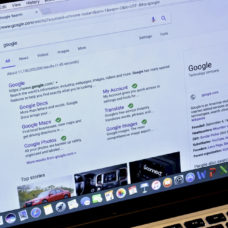Writing blog titles may be easy. But, turning them into highly irresistible content headlines that will attract readers and potential customers is an entirely different thing.
A blog title is considered one of the most significant parts of your page. You may say that it’s just as important as your content.
You could even say it’s more important since it’s the first thing your potential readers will see when they come across your content.
For some, creating titles can be effortless. But sometimes, it can be a struggle, especially if it’s a complicated or niche topic.
Again, titles or headlines are the first things readers see while searching for something to read online. That 70-character-long line could either help you gain traffic or turn your potential readers away.
There’s probably nothing more frustrating than having your well-researched articles sitting there on the Internet ignored and un-shared. Often, it’s all thanks to your titles that fail to attract the interest of people.
In this article, we will share with you some useful techniques so you can create not just compelling but powerful headlines that can boost your user engagement and web traffic.
1. Keep it Short and Sweet
There’s no better way to write persuasive content headlines than by getting straight to the point.
Make it brief but comprehensive. If you’re having a hard time doing that, ask yourself this vital question: “how would I explain my blog content to a family member or friend in just six or seven words?”
With enough practice, setting character limits or boundaries when crafting your blog title will make you think outside the box and be more creative.
Furthermore, your headline must also answer your potential reader’s question of “what’s in it for me?”
Remember, you write not for your business but for your readers. Your webpage will have better chances of ranking higher on SERP if your title is straightforward and relevant to your readers.
2. Use Powerful Words
When crafting your content headlines, always make it a point to use powerful words. These words can turn your headlines from average to irresistible by invoking emotions that people can relate to.
Powerful words could potentially make your post go viral or increase your click-through rate, traffic, and sales. You can also use them on other parts of your content like headings and subheadings.
Studies showed that emotion-triggering content is more likely to be shared than a post that is not as emotionally charged.
Aside from that, powerful words also trigger the curiosity of readers. Studies revealed that using powerful words makes it impossible for people to resist clicking, sharing, and reading content.
Now, there are hundreds of powerful words that you can use in your headline. To make it easier, we suggest that you create a list and categorize the words by the emotions that they could invoke in readers.
Below is an excellent example from Sumo:

3. Make Your Readers Curious
One effective way to attract readers is to create headlines that will make them curious about your content. You can do this by appealing to people’s natural thirst for knowledge and not by writing controversial titles or click baits.
Controversial headlines are often overpromised but underdeliver.
Click-baiting can definitely get users to check on your content. But, if your readers realized your content is not what you described in your headline, it could be branded as poor quality.
Never resort to this kind of strategy to attract readers. Instead, create content headlines that let your readers know they could learn something from your article.
Use headlines that will show readers good results and benefits.
Again, people on the Internet are either looking for solutions to their problems or new information. Take advantage of your readers’ natural curiosity by creating honest headlines that would lead them to relevant and valuable content.
4. Avoid Sensationalism
As a content creator and marketer, your responsibility involves providing accurate and reliable headlines and content to your readers. Of course, the competition is tight in the world of digital marketing, but it’s not enough reason for you to mislead people.
Sensational titles are often associated with low-quality content. They tend to annoy people because they are made to seek attention.
Again, you may get people to click on your headline, but if your content fails to deliver what’s expected by your readers, it might increase your bounce rate and hurt your ranking in the long run.
Sensationalism is not a sustainable means to drive traffic to your site, especially if you can’t come up with witty titles for more serious, technical posts. Remember, not all posts are meant to be written casually or be read like entertainment.
Make sure that your content delivers what your headline promised. Not only will it leave your readers happy and satisfied, but it will also help you avoid potential Google penalties for spammy or misleading content.
5. Use Headline Analyzer Tools
There are plenty of tools that you can use to improve the quality of your content. Among these tools are headline analyzers that are beneficial in crafting irresistible content headlines.
Unlike some content tools that are sophisticated and difficult to use, headline analyzer tools are simple and straightforward.
Just enter your title and let the tool calculate your score based on its emotional appeal. You can then use the score provided by the analyzer to tweak your title and make it more compelling to your target audience.
Some of the most reliable headline analyzer tools that you can use are the CoSchedule Headline Analyzer, AM Institute’s Emotional Marketing Value Headline Analyzer, and the Sharethrough Headline Analyzer.
Write for the Readers, not for Google
When writing blog titles or content headlines, always keep your readers in mind.
Create headlines that are relevant to your content and are not misleading.
Never use your blog titles to trick people into reading your posts. It won’t just hurt your ranking but your website credibility as well.



















Comments (0)
Most Recent